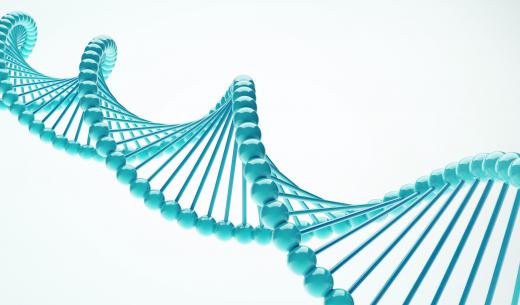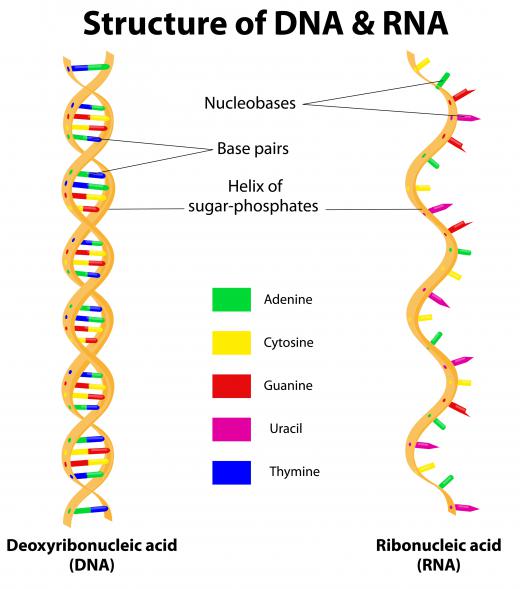What Is Electrophoresis?
The process of electrophoresis uses a field of electrical charge to separate charged particles. It is commonly used in biology to separate DNA or protein molecules. Various procedures may be used, depending on the type and size of the molecules to be separated, but all procedures require a charge source, a support medium, and a buffer solution.
All electrophoresis procedures separate molecules based on their charge and size. An electric field is applied to the molecules, and since the molecules are electrically charged, this results in a force acting on the molecules. The greater the charge of the molecule, the greater the force applied by the electrical field and the farther the molecule will move through the support medium. Size also affects how far a molecule will move — a large molecule will not move as far as a small molecule with the same charge. The ratio of charge to mass for a molecule determines how far it moves through the support medium.

Various types of gels are the most commonly used support medium for electrophoresis. Gels may be in slab or tube form. Gel slabs allow many samples to be run at the same time, so they are the most commonly used method in laboratories. Tube gels, however, allow better resolution of the sample results, so they are sometimes a better choice for protein electrophoresis.

Agarose gel is a common substance used for electrophoresis of DNA and other nucleic acids. The agarose creates a large pore structure, so the large molecules that often must be run through the gel to analyze DNA can move more easily. A different type of gel is usually used if the goal is sequencing smaller DNA molecules, however. This gel, called a denaturing polyacrylamide gel or just a sequencing gel, gives results with a much higher resolution. The results allow a scientist to distinguish between two segments of DNA that differ by only one base pair.
Acrylamide gels are typically used for protein separation. The most common process is called Sodium Dodecyl Sulfate Polyacrylamide Gel Electrophoresis (SDS-PAGE). SDS is a detergent that denatures the proteins. The gel is run with a buffer that contains a layer of low mobility ions and a layer of high mobility ions. These layers help separate the proteins according to their size. Proteins are also sometimes run in native gels, which do not denature the proteins.
Two more advanced techniques are capillary and 2-D electrophoresis. The capillary procedure forces molecules through a capillary tube with the electrical charge and gives highly accurate results. 2-D electrophoresis separates molecules along an x-axis and a y-axis. Molecules are separated by size along one axis and by charge along the other axis.
AS FEATURED ON:
AS FEATURED ON:












Discussion Comments
DNA fragments are best seen using fluorescent dye made specifically for coloring DNA.
These fluorescent dyes have the ability to trap in energy and later release that energy in a form of light, causing things that would be hard to see stand out for better viewing.
Post your comments